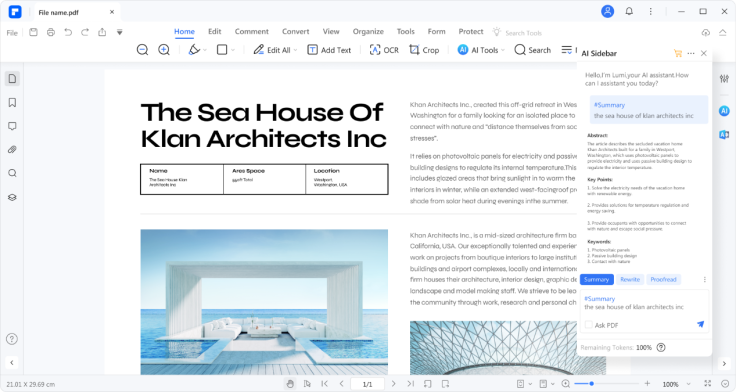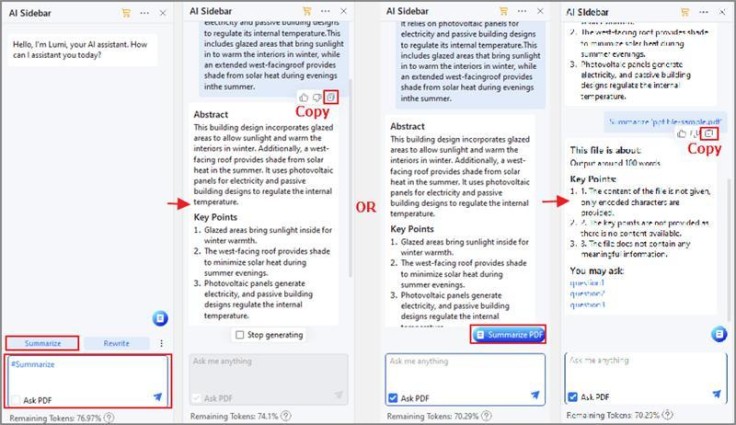How to Summarize a Research Paper: Traditional Methods and AI Tools
Created by
Mastering the art of research paper summarization is vital for students, researchers, and professionals alike. It offers a swift route to comprehending a research article's core points and discoveries without delving into the entire paper. This article explores both traditional and AI-driven techniques for summarizing research papers and sheds light on the advantages each approach offers.
Traditional Ways of Summarizing Research Papers
Traditional research paper summarization relies on manual practices such as note-taking, highlighting, and condensing vital points. The steps involved include:
Careful Reading: Begin by thoroughly reading the article to grasp its context and central concepts.
Identify Key Points: Pinpoint the research question, methods, results, and implications.
Condense Information: Express these key points in your own words, avoiding unnecessary jargon.
Edit for Clarity: Review and refine the summary for clarity and accuracy.
While traditional methods are time-consuming and meticulous, they offer a more comprehensive analysis than AI tools. They ensure a thorough examination of the paper, capturing all crucial information.
Tips for Effective Research Paper Summarization
Summarizing a research paper can be a daunting task, particularly for those new to the process. Here are some valuable tips to facilitate effective research paper summarization:
Read carefully to understand the paper's context and main ideas.
Identify central arguments, key phrases, and supporting data.
Summarize concisely in your own words.
Emphasize primary findings and their implications.
Use bullet points to organize information effectively.
Exclude irrelevant details to maintain focus on core ideas.
The ultimate objective is to pinpoint the research paper's core ideas and convey them in a concise, objective, and authorial manner.
Limitations of Traditional Research Paper Summarization
Subjectivity: Personal biases can influence interpretation.
Time-consuming: Manual summarization demands extensive reading and analysis, making it time intensive.
Potential errors: Traditional approaches may lead to errors like misinterpretation, inaccuracies, or omissions.
Limited focus: They might solely concentrate on crucial details, missing research nuances.
Lack of automation: Relying on manual processes is slow and inefficient, highlighting the need for automated summarization techniques due to the increasing research volume.
AI Tools for Research Paper Summarization
AI tools are gaining traction for summarizing research papers. They employ advanced algorithms to identify and extract essential information, generating concise and accurate summaries. These tools offer a more objective and efficient approach. Some noteworthy AI tools include:
PDFelement Research Article Summarizer
Wondershare PDFelement - One-stop PDF solution powered by AI. Fast, affordable, and easy way to edit, convert, sign PDFs, and more - accessible across desktop, mobile, and web platforms. A popular AI tool designed for research paper summarization. The software incorporates a smart PDF AI robot known as Lumi, which employs advanced algorithms to analyze and summarize research paper content. With its user-friendly interface and advanced functionalities, PDFelement presents an efficient and precise method for research paper summarization.

One of the key features of PDFelement's summarization tool is its capacity to analyze and summarize essential information from a research paper. This tool leverages natural language processing techniques to identify the most pertinent content within a research paper, subsequently delivering a concise summary. Users can further customize the summarization process by selecting specific sections or keywords to include in the summary.
To utilize PDFelement's summarization tool, follow these steps:
Step 1: Open PDFelement and access the Lumi PDF AI robot by clicking the button in the bottom right corner of the floating toolbar.

Step 2: Select "Summarize" from the pop-up menu.
Step 3: Import the current file or browse your local drive to add another PDF into the Summarize window. Alternatively, you can click the "Content" tab to enable Lumi to summarize the text.
Step 4: Click "Analysis" to initiate the summarization process.
Step 5: View the output under the Response box.
Step 6: Copy and paste the response into your file, and edit it as needed.

PDFelement's summarization tool furnishes an efficient and accurate means of summarizing research papers, significantly economizing researchers' time and effort. Its advanced features, encompassing natural language processing and customizable summarization options, establish it as an ideal tool for researchers seeking to streamline their research processes.
AI tools have limitations in summarizing research, such as errors and oversimplification. Review and edit AI-generated summaries for accuracy.
In conclusion, summarizing research is essential, and AI tools like PDFelement and GPT-3 can address traditional limitations. PDFelement, with its user-friendly interface and Lumi PDF AI robot, excels in producing accurate and efficient research paper summaries.
© 2025 University Herald, All rights reserved. Do not reproduce without permission.








